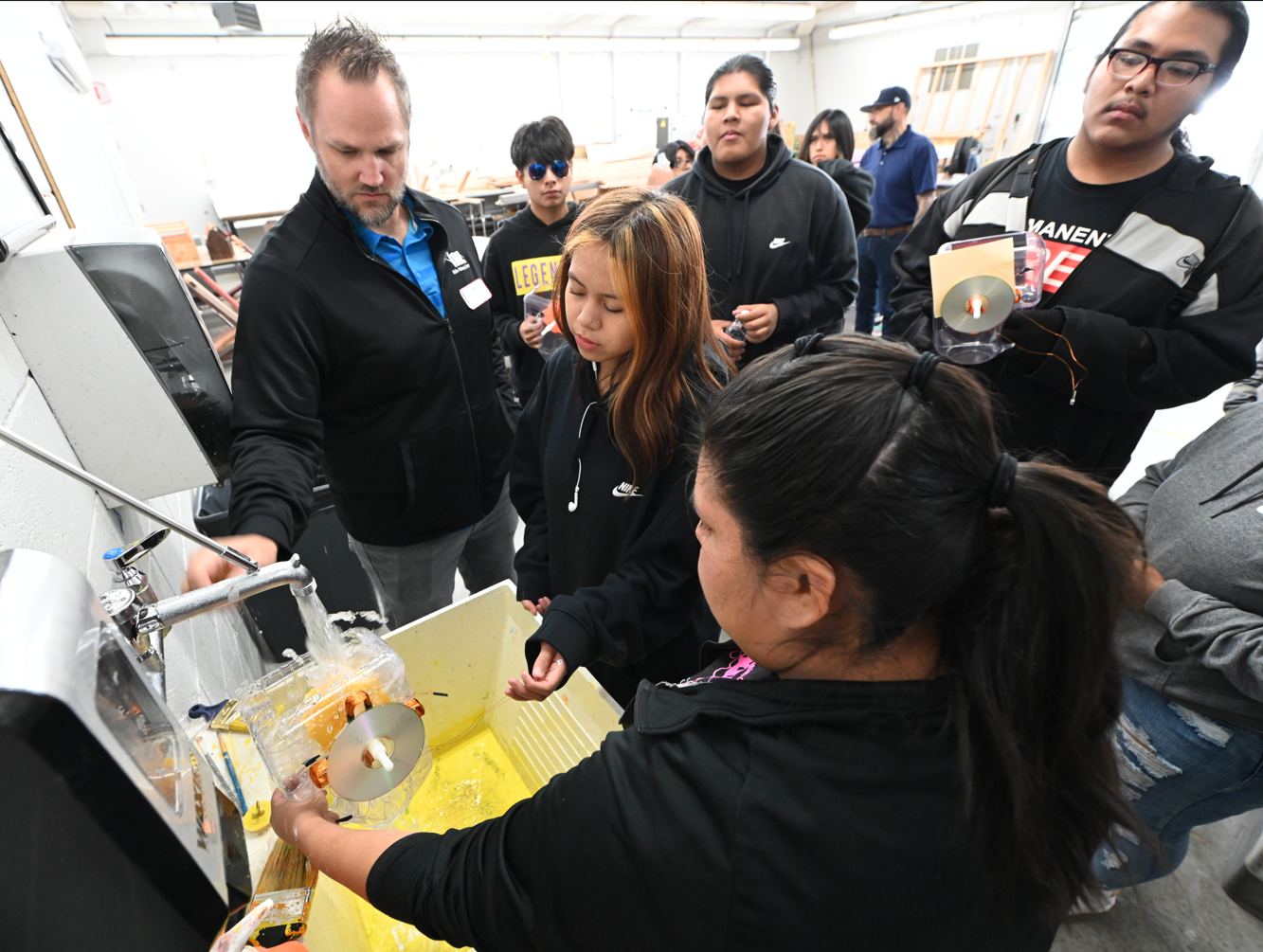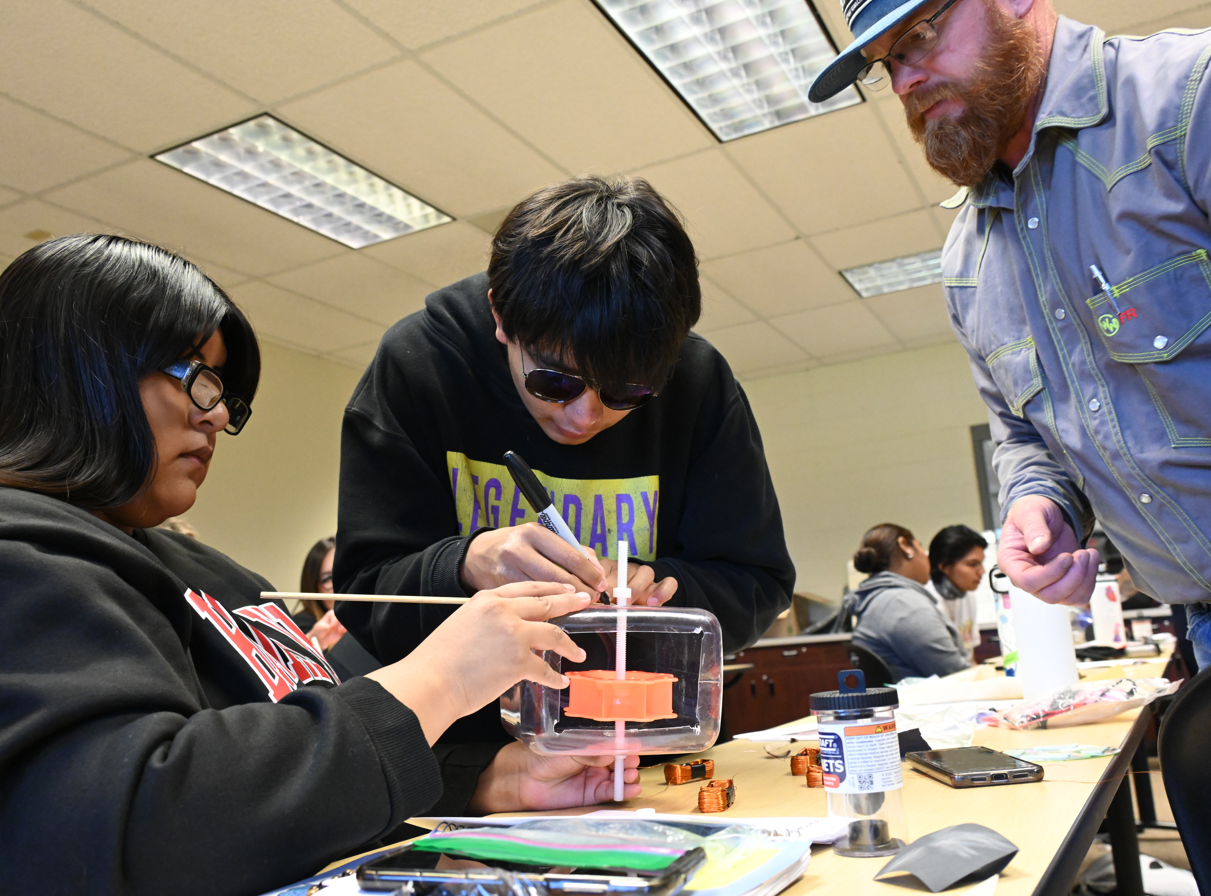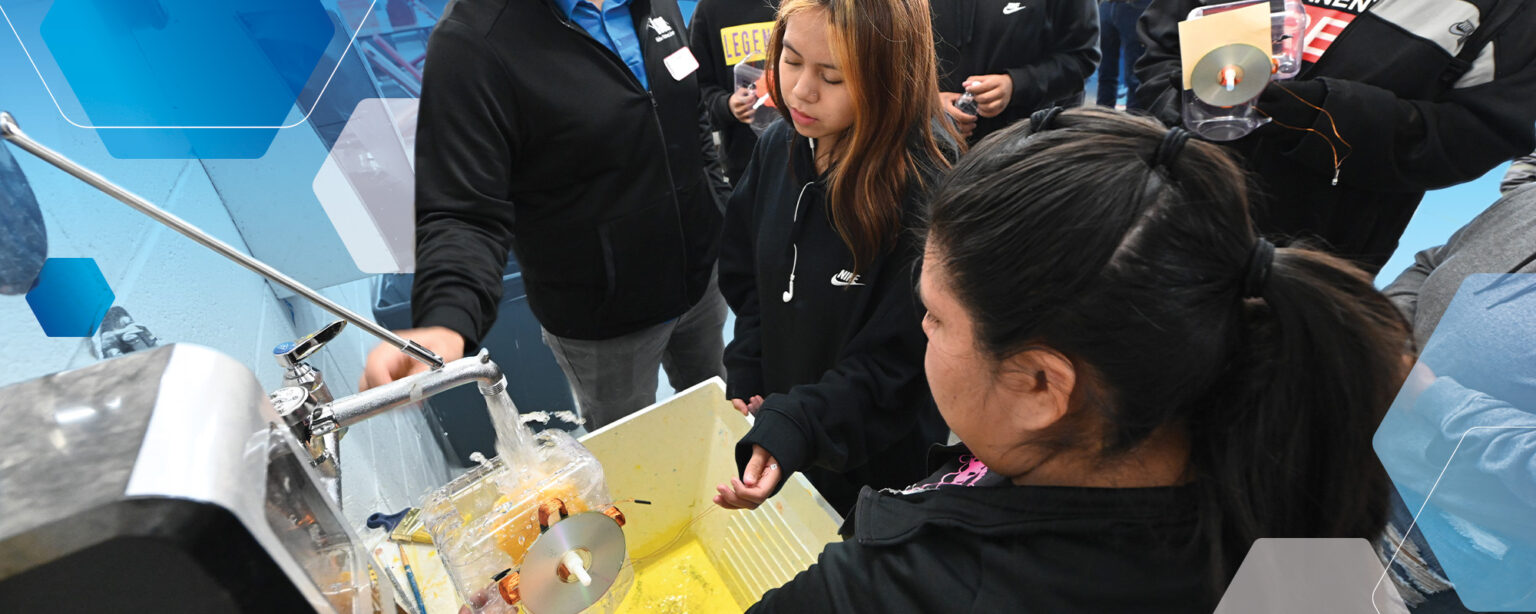For Idaho National Laboratory (INL) researchers, success in technology development requires research and effective outreach. Outreach efforts include creating spaces where open dialogue about novel technologies and their positive and negative implications is encouraged. Education is vital to advancing more efficient, economic and environmentally friendly technologies while also empowering the communities these technologies serve with confidence to advocate for themselves.
As one of the many clean energy solutions, hydropower offers a variety of benefits, including affordable renewable energy, generation flexibility and resilience, and flood control, to name a few. Adding hydropower-generating infrastructure to water supply systems or waterways can also bring a variety of community benefits, such as recreation, while avoiding some environmental impacts usually associated with traditional dams.
“Understanding the benefits of hydropower, as well as its impacts both environmentally and socio-culturally, can be particularly important for historically underserved and underrepresented communities,” said Trevor Atkinson, lead on the project. “These communities have historically been excluded from decisions about energy development.”
Developing the project
With funding from the U.S. Department of Energy’s Water Power Technologies Office, INL researchers, some of whom are tribal members, have set out to engage with students of the federally recognized Shoshone-Bannock Tribes to talk about hydropower.
Atkinson recognized the cultural and historical significance of water to the Tribes and thought that students at the Shoshone-Bannock Jr./Sr. High School in Fort Hall, Idaho, would benefit from introductory and culturally focused hydropower information. He also realized that the INL researchers had much to learn from the students regarding their traditional values and their perspectives on hydropower and other types of development.

Atkinson and team developed Hydro School, a summer camp consisting of two days in the classroom, one in the field and a final day visiting a hydropower plant in Idaho Falls.
“The goal of the camp was to help students understand important hydropower-related topics,” said Atkinson. “Discussion centered around the basics of hydropower, different technologies and applications, potential education and career pathways, and important cultural implications with the environment and tribal communities.”
A future in hydropower
Hydro School began with introductory INL presentations about hydropower. An interactive game called Slow Motion Extinction allowed students to pretend to be fish to show how hydropower development can impact migration patterns.
Cleve Davis, INL researcher and member of the Shoshone-Bannock Tribes, relayed a traditional oral history about Coyote, a mythological being in Shoshone-Bannock culture, and the creation of natural dams along the Snake River. Davis summarized the Tribes’ water rights, as established in the 1990 Fort Hall Water Rights Agreement. He also discussed the Tribes’ relation to hydropower development and impacts upon natural and culturally significant landscapes, covering aspects both within and outside the tribal lands. Additionally, Davis emphasized the Tribes’ sovereign authority in managing and safeguarding their water resources.
Integrating this discussion into the camp helped students understand the relationship between hydropower development and important natural and cultural resources. By addressing the Tribes’ previous challenges related to water rights and honoring the historical significance of water, instructors helped students learn the cultural implications of deploying certain technologies on sacred land and rivers. In turn, the instructors gained a deeper appreciation for the students’ perspectives on natural and cultural resources and energy development.
Exploring career opportunities
On day two, students explored hydropower career opportunities and built model hydropower turbines provided by the Foundation for Water and Energy Education. Davis shared a typical day in his life as a tribal member and INL researcher. He highlighted his experience growing up on tribal lands, his academic pursuits and challenges, and his profession by showcasing examples of using geographic information systems in hydropower research at INL. Davis’ success gave high school students perspective on the opportunities available to them.

“I felt it was important to share my career journey with the youth because it provided a tangible example of possibilities,” said Davis. “They could see someone who shares their background and heritage succeed in fields like data science and environmental science.”
Along with the discussion surrounding Davis’ career path, students played a choose-your-own-adventure game where they provided various responses to scenarios until they reached a possible career. They then learned about important aspects of employment, including educational requirements and salary ranges, in various hydropower fields.
Student pairs ended the day by building model hydropower turbines to generate electricity.
Water’s larger role
Day three of the camp was a field trip to the Spring Creek United States Geological Survey gauge station in the Fort Hall Snake River bottoms, an area that is sacred to the Tribes and has been impacted by hydropower development. Nolan Brown and Bailey Dann from the Shoshone-Bannock Language and Cultural Preservation Department presented to the group.
Brown and Dann described wildlife, seasons, traditional oral stories, how to pronounce wildlife names in both Shoshone and Bannock languages, and the importance of the river bottoms.
They also discussed linguistic and cultural aspects of the river bottoms, emphasizing the importance of spring-fed creeks and water itself as a source of life for all, including the Shoshone and Bannock people who have made the river bottoms their home for millennia.
“Speaking about the Fort Hall Bottoms with students at the Hydro School camp was a great opportunity for our youth not only to talk about Western scientific ways of knowing, but also sharing with them ways of knowing from a cultural lens,” said Dann. “For the Shoshone-Bannock people, water isn’t just a resource—it’s life itself. This camp provided an avenue to ignite a passion for connecting our languages and culture to our environment and protecting our water for generations to come.”
Language instructors and staff also shared aspects of the natural resources and their uses through the Shoshone seasonal subsistence round calendar. This calendar displays the four essential elements of life, the four seasons, the months, plants, animals and activities that illustrate a sample of the Tribes’ seasonal subsistence and cultural practices. Water is at the core of the calendar— the source of life and central to the Tribes’ ongoing cultural practices.
Students then broke into groups to calculate the stream flow rate and understand the potential of producing hydropower with a hydrokinetic turbine. The activity helped students learn how basic measurements calculate hydropower potential and the environmental impacts that must be addressed.
Power plant tour
The final day of the Hydro School ended with a tour of the Idaho Falls Power Hydropower Plant, where students learned about the 50-megawatt complex and how its power is generated and distributed. The opportunity helped students put what they learned in the classroom into a physical context.
Looking forward
Throughout the camp, researchers highlighted both the environmental and cultural impacts of hydropower. By learning about the deep and rich culture in the Shoshone-Bannock Tribes, INL researchers gained insights into how hydropower can impact and benefit communities.
To make hydropower and other clean energy technologies viable options, community members must have a say in the deployment of those technologies. Engagement opportunities such as Hydro School increase the accessibility of career paths in science, technology, engineering, math fields. “Hydro School shows students that STEM fields are accessible to them, if they work hard and consistently pursue their aspirations. If that is the path they choose,” said Davis.





